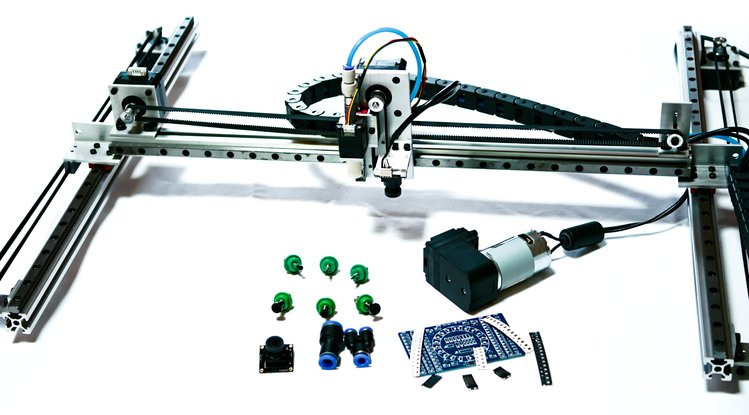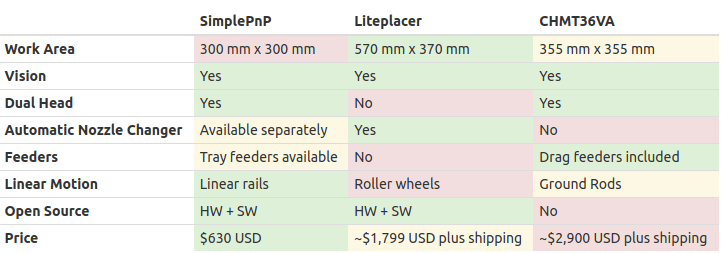If you have a small production run for your board, it may not be cost-effective to ask a factory to manufacture it for you, and assembling the boards entirely by hand will be a time-consuming process. Getting a pick-and-place machine to automate the process would save time, but even the cheaper models on Aliexpress cost several thousand dollars.
Citrus CNC tries to address the cost issue with the SimplePnP open source hardware pick-and-place machine that brings the price down to several hundred dollars.

- MCU – Microchip Atmega328p running GRBL firmware
- Motor Drivers – TMC2209 stepper for two-phase stepper motors
- Word Area – 300 mm (X) x 300 mm (Y)
- Z Travel – 23 mm
- Components per Hour – 750 with vision assist
- Component Size – As small as 0402 (1005 metric)
- Vacuum Heads – Single vacuum head (base model), or optional dual-head
- Nozzle System – Juki 5xx with tool changer capable holder
- Vision – Top-vision and optional bottom-vision
- USB Camera Specs – 1280×720 @ 30 fps ( OmniVision OV9712 based)
- Host Interface – 3x USB ports
- Power Supply – 12V/5A (60 W)
- Dimensions – 500 × 450 × 200 mm
- Weight: 4 kg

You’ll find the design files, hardware & software user manuals, and a PDF assembly guide on Github. You can also read the instructions to configure OpenPnP control software working on Mac OS, Windows and Linux.
Citrus CNC launched SimplePnP pick-and-place machine on Crowd Supply and already surpassed their $6,500 goal. Rewards start at $630 for the model with one nozzle holder, a top-vision camera, one rotation motor, one linear rail, a vacuum pump, a power supply, motion control electronics, and three vacuum nozzles. The price goes up to $920 for the dual-head model with two cameras and up to 12 vacuum nozzles. Shipping is free to the US, and $84 to the rest of the world. Backers should expect their rewards to ship at the end of May if there aren’t any delays with the project.

Jean-Luc started CNX Software in 2010 as a part-time endeavor, before quitting his job as a software engineering manager, and starting to write daily news, and reviews full time later in 2011.
Support CNX Software! Donate via cryptocurrencies, become a Patron on Patreon, or purchase goods on Amazon or Aliexpress




